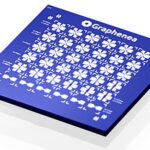OLED and LED technologies dominate the display market, but understanding their differences is crucial for choosing the right TV or monitor. This guide dives deep into the comparison, highlighting the pros and cons of each to help you make an informed decision.
OLED vs. LED: Core Differences
The fundamental difference lies in how they produce light and images. LED (Light Emitting Diode) displays rely on a separate backlight to illuminate a liquid crystal display (LCD) panel. This LCD panel controls the light passing through to create the image. Older LED TVs had limited lighting zones, resulting in uneven backlighting and grayish blacks. Modern LEDs have significantly improved with thousands of zones, allowing for more precise brightness control.
OLED (Organic Light Emitting Diode) displays, on the other hand, utilize organic compounds that light up individually when electricity is applied. Each pixel acts as its own light source, eliminating the need for a separate backlight. This allows for perfect black levels by simply turning off individual pixels.
A visual comparison of OLED and LED TVs.
When to Choose OLED
OLED excels in several key areas, making it the preferred choice for specific needs:
Unmatched Slimness and Design
OLED’s self-emissive nature allows for incredibly thin displays. This eliminates the bulk of a backlight, resulting in sleek and modern designs perfect for wall-mounting or minimalist setups.
The thin profile of an LG OLED TV.
Energy Efficiency
OLED’s ability to turn off individual pixels dramatically reduces power consumption, especially when displaying dark content. This is particularly beneficial for mobile devices, extending battery life significantly.
Perfect Black Levels and Contrast
The ability to achieve true black enhances contrast ratios, creating a more vibrant and realistic image with incredible detail in dark scenes. This is a defining characteristic of OLED and a major advantage over traditional LED.
When to Choose LED
While OLED offers premium features, LED remains a strong contender for several reasons:
Budget-Friendly Option
LED TVs are generally more affordable than comparable OLED models, making them accessible to a wider range of consumers.
High Refresh Rates for Gaming
LED technology currently leads in refresh rate capabilities, offering incredibly smooth motion for fast-paced gaming and action sequences. High refresh rate monitors, often exceeding 240Hz, are more readily available and affordable in LED compared to OLED.
Maximum Brightness for Bright Environments
LED displays can achieve significantly higher brightness levels than OLEDs. This makes them ideal for brightly lit rooms or outdoor use where ambient light can wash out OLED screens.
Emerging LED Technologies: QLED and MicroLED
A comparison showcasing the differences in black levels and contrast between LED, Mini LED, and OLED.
QLED utilizes quantum dots to enhance color accuracy and brightness in LED TVs, while MicroLED aims to shrink LEDs to the pixel level, potentially rivaling OLED’s black levels. These advancements are blurring the lines between LED and OLED, offering consumers more choices with varying performance characteristics. While MicroLED is still in its early stages, Mini LED backlights are currently available, offering improved local dimming and black levels in LED TVs.
Conclusion: Which is Right for You?
The choice between OLED and LED depends on your priorities and budget. OLED excels in picture quality, slim design, and energy efficiency, while LED offers affordability, high refresh rates, and brightness. Consider your viewing environment, content preferences, and budget to determine the best technology for your needs. Emerging technologies like QLED and Mini LED further expand the options within the LED category, providing improved performance closer to OLED at a lower cost.
